Environmental Engineering Reference
In-Depth Information
Total risk, ISI and
repair not taken
into account
End of service
2
nd
ISI
3
rd
ISI
1
st
ISI
P
f
Total risk, ISI
and repair taken
into account
P
in
7. 7
Frequency of ISI taking the risk factor into account (numerical
values are purely illustrative).
values of risk during the operation of this component (Fig. 7.7).
If the initial level of component failure probability is
P
in
, then during
operation due to the development of various processes of damage in the
metal of the component the failure probability will increase. When the
probability Pf reaches the permissible value [
P
] at which ISI and repair
must be carried out, the component is either decommissioned or measures
are taken to decrease the probability of its failure. Such measures may
include ISI and subsequent repair of identified defects. After ISI and
repair, the failure probability of the component decreases (in Fig. 7.7 this
corresponds to times
T
1
,
T
2
and
T
3
. However, as mentioned by the authors
of the studies in question, the initial level of probability of failure is not
reached because of the irreversible degradation of metal and possible
residual defectiveness of the component. When the possibility of reducing
the probability of failure due to ISI and repair is exhausted, the component
reached the end of its operating life.
7.3 Optimisation of the risk-based oriented
in-service inspection at the Ignalinsk nuclear
power plant
111
The scheme of the reactor RBMK-1500 of the unit 2 of the Ignalinsk nuclear
power plant is shown in Fig. 7.8.
The Lithuanian nuclear regulatory authorities require:





Search WWH ::

Custom Search